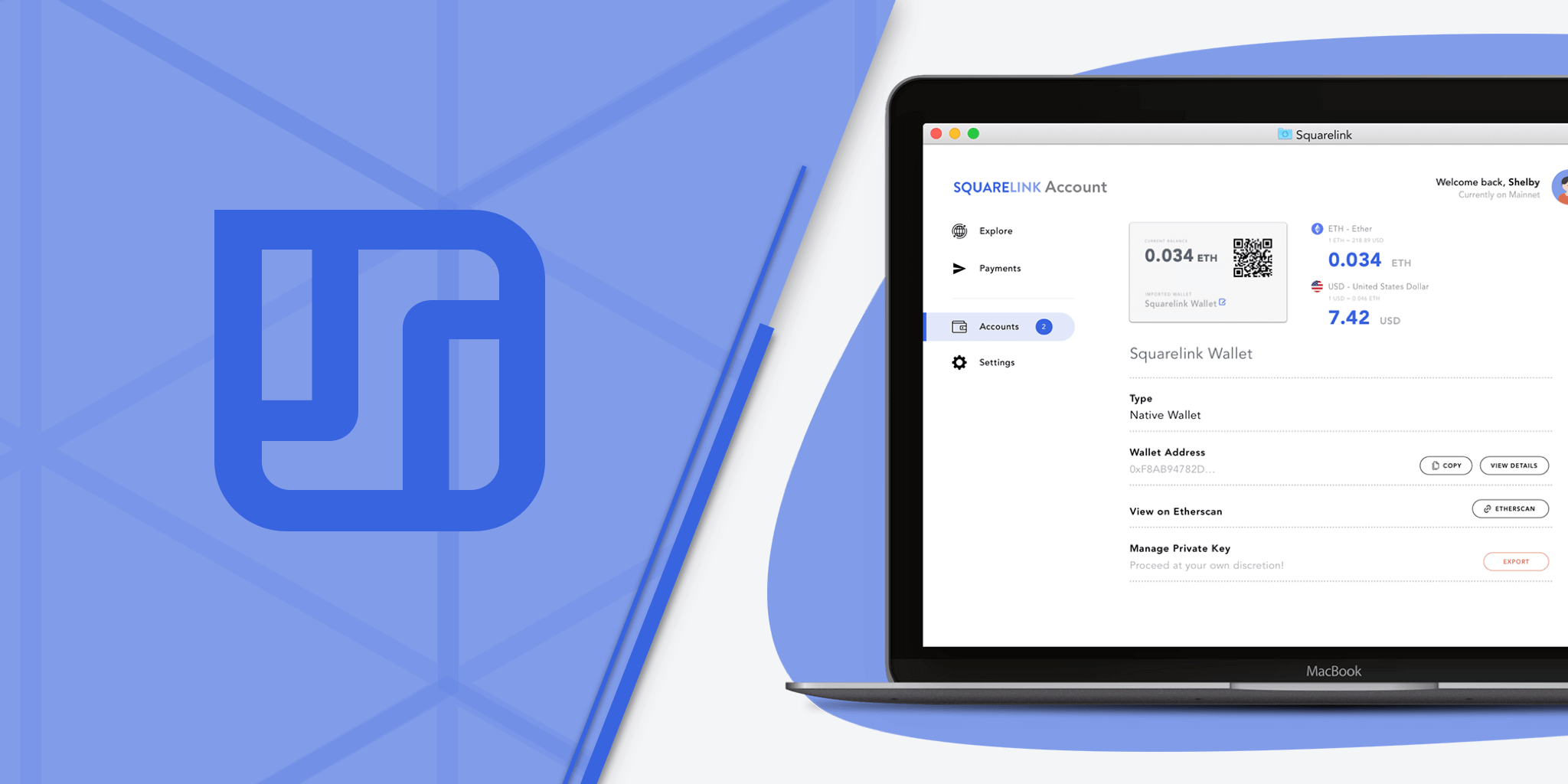Your parents probably don't understand how email works — but they can forward you chain mail. The web has created a great deal of infrastructure that abstracts away complexity and makes it easy for developers to create applications that are simple to use.
This time last year your parents couldn't use a Dapp without understanding how Web3 works.
But in 2019 the crypto industry has made a tremendous amount of progress in creating tools that enable developers to make Dapps that are easy to use. A whole new class of Wallets has emerged, focused on abstracting away the complexity of things like private keys and seed phrases.
Squarelink is a new key management tool that creates an easy to use Single Sign On experience for users. They are focused on bridging the gap between traditional usability and decentralized security. Squarelink enables users to manage their private keys with a master key that is derived from their email address, password, and 256-bit cryptographic salt. And if (or when) a user loses access to their account, Squarelink makes it easy for them to recover their account information via non-custodial key recovery.

Squarelink's account recovery onboarding
This setup lets users easily sign in, sign transactions, and recover private keys — with just an email and password.
Squarelink has a Javascript SDK that enables devs to easily add the wallet to their Dapp. The SDK runs inside of your Dapp and interacts directly with the web3.js API. You can integrate Squarelink without rewriting your smart contract.
Making Squarelink Even Easier To Use
Squarelink recently added a module to Onboard.js — an open-source JavaScript library to onboard users to Ethereum apps — to support their wallet. Onboard.js helps your users transact with ease by enabling wallet selection, connection, wallet checks, and real-time state updates.
 The Onboard.js Wallet Picker Modal
The Onboard.js Wallet Picker Modal
Onboard was architected to enable custom wallet and wallet check modules to be plugged in. This gives the framework flexibility to adapt to the needs of different wallets and on-boarding flows that are needed across the web3 ecosystem.
A wallet module is an abstraction that allows interoperability between wallets within Onboard. Any developer can create a wallet module and issue a pull request to have it added into the main blocknative repository. Based upon Squarelink's integration, we've created a code sample for adding a SDK wallet to Onboard.js
 See the full code sample here
See the full code sample here
Creating a custom module for your wallet is a great way to make it easier for Dapp developers to get users onboard. According to Alex Patin, Co-founder, Chief Technology Officer of Squarelink
Integrating with Blocknative was incredibly easy. Within a few minutes I submitted a PR and then the team merged it into the master. The combination of Blocknative's simple user onboarding and Squarelink's robust private key management creates a pretty compelling Web3 user experience.
Blocknative is excited to help support user-friendly wallets — like Squarelink. New innovations are working to make crypto accessible to the masses.
How To Make Your Dapp Simpler To Use
Blocknative builds tools that make it easy for developers to improve blockchain usability. Notify — the framework for real-time transaction notifications — is available via an API, SDK, or robust JavaScript library. And Onboard — our open-source solution to help users get started with Web3 — is available as a JavaScript library.
Developers can sign up for a free account to try Blocknative today.
Observe Ethereum
Blocknative's proven & powerful enterprise-grade infrastructure makes it easy for builders and traders to work with mempool data.
Visit ethernow.xyz
.png)

